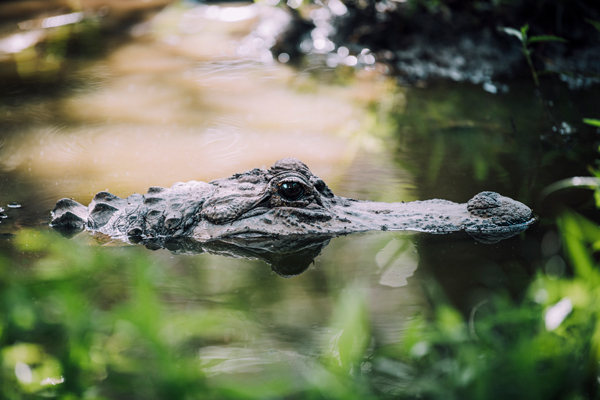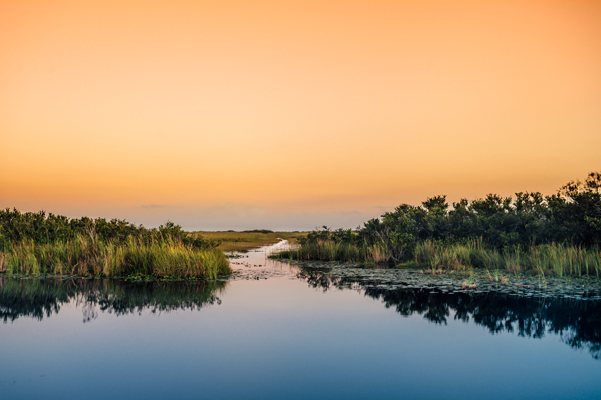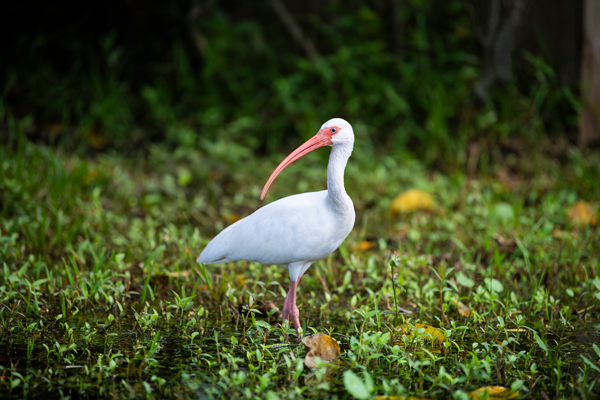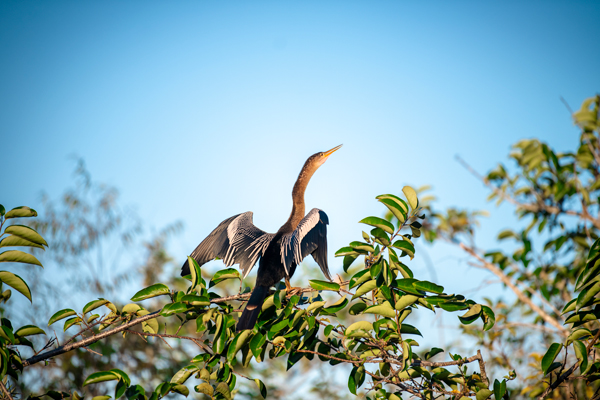Everglades National Park
Everglades National Park was established in 1947 to conserve the natural landscape and prevent further degradation of its land, plants, and animals. It’s a network of wetlands and forests fed by Lake Okeechobee and flowing into Florida Bay. The Park protects an unparalleled landscape that provides important habitat for numerous rare and endangered species like the manatee, American crocodile, and the elusive Florida panther. This vast wetland—covering more than 1.5 million acres of Florida—is an international treasure as well. A World Heritage Site, International Biosphere Reserve, a Wetland of International Importance, and a specially protected area under the Cartagena Treaty, Everglades National Park is the third-largest national park in the lower 48.
There is no shortage of activities for individuals, groups, or families to enjoy outdoors. The diverse habitats allow for enjoyable activities ranging from hiking, canoeing, kayaking, biking, fresh and saltwater fishing, and camping in the ultimate wilderness.
Park Activities
Bicycling
The best bicycling areas are at Shark Valley, the Snake Bight Trail near Flamingo, and along the Long Pine Key Nature Trail.
Bird Watching
Whether you spot a single great blue heron or an entire flock of roseate spoonbills, birdwatching is one of the most rewarding activities in the Everglades.
Boating
Most of the park is only accessible by water making boating a popular way to experience the Everglades. Whether you own a boat, are renting one, or are taking one of the tours that leave from Flamingo and the Gulf Coast, boating brings you closer to the park’s wild wonders.
Camping
The Everglades offers both front country camping and wilderness camping. Long Pine Key and Flamingo campgrounds offer drinking water, picnic tables, showers, grills, restrooms, and tent and trailer sites. Electric hookups are available at Flamingo. Primitive campsites and beach sites are available through the watery Everglades backcountry.
Kayaking & Canoeing
Gliding silently in a canoe or kayak gives you a wonderful vantage point on the wildlife and vegetation of the ‘glades. You might even get an up close view of a ‘gator! The Wilderness Waterway is 99 miles long and takes approximately 7-10 days by canoe or kayak, but many well-marked shorter trails exist.
Fishing
Everglades National Park is a popular spot for saltwater and freshwater sport fishing. Boats can be chartered at Flamingo. Be sure to check a visitor center for park fishing regulations and closed areas.
Geocaching
Geocaching is a real-world outdoor treasure hunt. Players locate hidden containers, called geocaches, using GPS-enabled devices and share their experiences online.
Hiking
In addition to short interpretive trails, there are some longer hiking trails in the park.
Ranger-Led Programs
One of the best ways to learn more about the park is participate in ranger-led activities. Rangers lead hikes, canoe trips, slough slogs, bicycle trips, tram tours, and campfire programs.
Slough Slogging
If you’re willing to get your feet wet, off-trail hiking, called slogging, will bring you into closer contact with the park’s more elusive species.
Tours
In addition to ranger-led activities, there are other ways to enjoy a guided tour through the park. Concession boat captains narrate boat tours along the mangrove coast at both Flamingo and the Gulf Coast, Tram Tour naturalists guide your explorations of the Shark River Slough, and naturalists with the Everglades National Park Institute can take you on exciting sightseeing programs.
Trails
In addition to short interpretive trails, there are some longer hiking trails in the park, these also include water trails.
Wildlife Viewing
There is no shortage of wildlife in the park! From the mighty alligator to the tiny mosquito fish, Everglades National Park boasts freshwater, brackish, and saltwater wildlife species throughout the park. Be sure to ask a park ranger for recent sightings and bring a camera along with you.
Visit the park’s website for more information.








